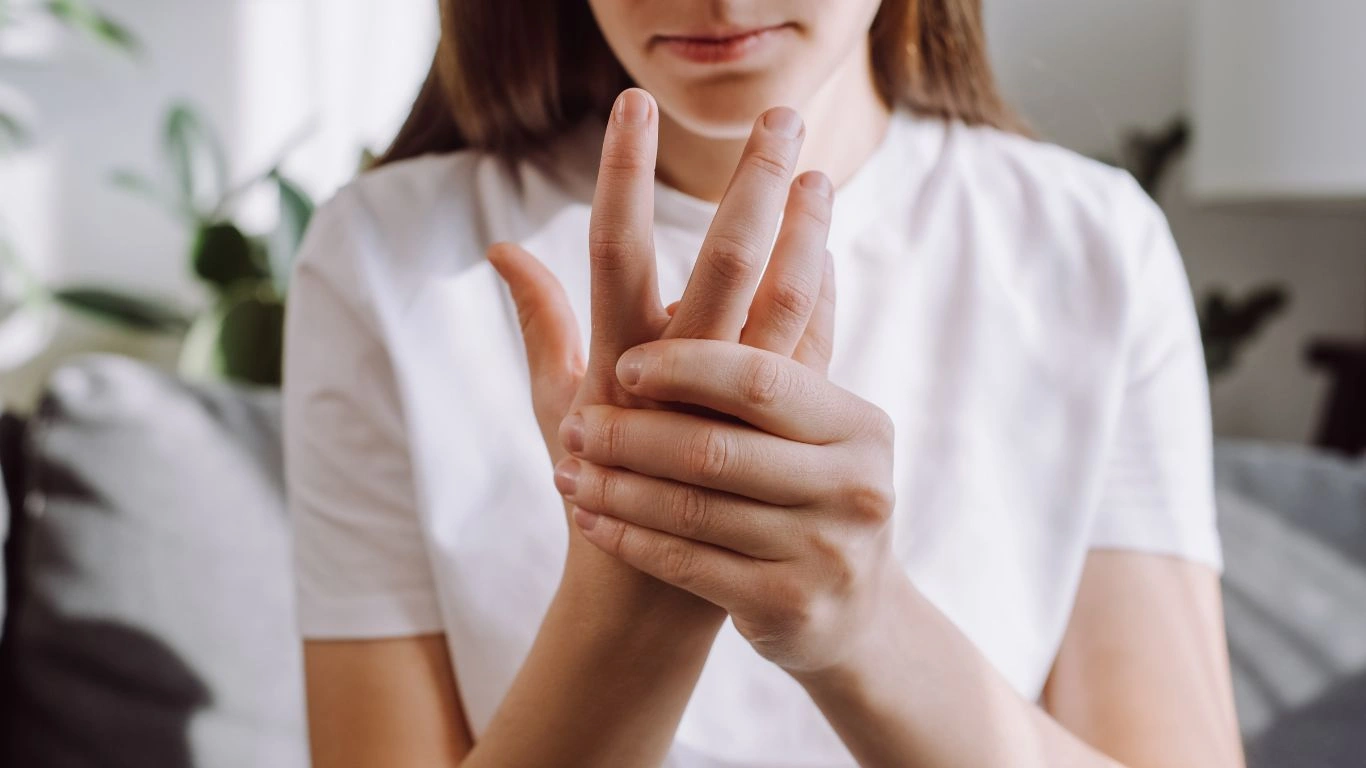Exercise Recommendations for Rheumatoid Arthritis: Stay Active Without the Pain
Wondering how to exercise with rheumatoid arthritis? It might seem tough, but staying active is one of the best ways to manage your condition. This guide covers the best exercises for RA, tips to stay safe while working out, and how to get the most out of your exercise routine. Don’t worry—you can absolutely stay active without making things worse!
Why Is Exercise Important for Rheumatoid Arthritis?
It might sound a little counterintuitive, right? “How can moving hurt when I’m already in pain?” But here’s the truth: regular, gentle exercise helps keep those joints moving and even improves your range of motion. Plus, it’s a great way to reduce stiffness, improve strength, and manage the symptoms of RA.
Exercise can also:
- Reduce pain: Movement helps reduce inflammation and stiffness in your joints.
- Improve mobility: Strengthening your muscles supports your joints and helps with balance.
- Boost mental health: Exercise releases endorphins, the body’s natural painkillers, and can even improve your mood.
Exercise Recommendations for Rheumatoid Arthritis
It’s essential to approach exercise carefully when dealing with RA. Here are some great types of exercise you can try, each with a focus on being joint-friendly and helping you stay mobile.
1. Low-Impact Aerobic Exercise
Aerobic exercise is a great way to get your heart pumping without putting too much strain on your joints. Think of activities like walking, swimming, or cycling. These exercises are gentle on your knees, hips, and other major joints, but still get your body moving. 
– Walking: Just a 20-30 minute walk can make a big difference in your energy levels and joint health.
– Swimming: The buoyancy of water reduces stress on your joints, making swimming an ideal choice for those with RA.
– Cycling: Whether it’s outdoor cycling or a stationary bike, cycling is a solid, low-impact option to get your cardio in without overloading your joints.
Pro Tip
If you’re new to exercise, start slow and gradually increase your time and intensity.
2. Strength Training (with Light Weights)
Building strength is key to supporting your joints and improving stability. But don’t worry, you don’t need to hit the gym and lift heavy weights. Start with light weights or resistance bands to gently build muscle. 
– Dumbbells: Use light dumbbells to work your arms, shoulders, and legs. Start with just a couple of pounds, and gradually increase the weight as you get stronger.
– Resistance Bands: These are awesome for RA-friendly strength training. They can target a lot of muscle groups with less impact on the joints.
– Bodyweight Exercises: Simple exercises like squats, lunges, and wall push-ups can work wonders for building strength without putting your joints at risk.
Pro Tip
Pay attention to your form! If anything feels uncomfortable or painful, stop and adjust. You want to feel challenged but not hurt.
3. Stretching and Flexibility Exercises
Flexibility exercises help you maintain your range of motion and keep your joints from becoming stiff. Gentle stretching can improve blood flow, reduce muscle tension, and prevent further joint damage. 
– Yoga: Many people with RA find yoga to be a fantastic way to stretch, improve balance, and manage stress. Look for classes or videos specifically geared towards RA or beginners.
– Tai Chi: This ancient martial art focuses on slow, controlled movements, making it ideal for RA. It also improves flexibility and balance.
– Gentle Stretching: Focus on gentle stretches for your arms, legs, and neck. Hold each stretch for about 20-30 seconds, breathing deeply to release tension.
Pro Tip
Make sure your stretches are slow and controlled. Don’t push yourself too hard, and always listen to your body.
4. Range-of-Motion Exercises
These exercises are designed to keep your joints moving through their full range, which is especially helpful for those with joint damage from RA. They help improve joint mobility and prevent further stiffness. 
– Shoulder Rolls: Simple shoulder rolls forward and backward can keep your upper body flexible.
– Ankle Circles: Sitting down, rotate your ankles in small circles to keep them limber.
– Wrist Stretching: Gentle wrist stretches help keep your wrists from stiffening up, which is common in RA.
Pro Tip
Focus on controlled movements. These exercises should never cause pain—only gentle stretching or movement.
5. Balance and Stability Training
As you’re strengthening your muscles and improving flexibility, it’s also important to work on your balance. Balance exercises help prevent falls, especially since RA can sometimes affect your stability.
– Standing on One Leg: Start with support if you need to, but practice standing on one leg for 10-15 seconds. Switch legs.
– Heel-to-Toe Walking: Walk in a straight line, placing the heel of one foot right in front of the toes of the other. This works on balance and stability.
– Standing Marches: March in place, lifting your knees high. Try this while holding onto a sturdy chair for support.
Pro Tip
If balance is a concern, work on this with a physical therapist to make sure you’re doing the exercises correctly and safely.
How Often Should You Exercise with RA?
The golden rule here is consistency over intensity. Aim for at least 30 minutes of exercise most days of the week. You don’t have to go all-out every time; just staying active is the key.
Start with 2-3 days a week and gradually increase as your body allows. Your goal should be to keep moving without overloading your joints. Rest days are just as important as exercise days—give your body time to recover.
Tips for Exercising with Rheumatoid Arthritis
- Warm up and cool down: Before any workout, spend 5-10 minutes warming up (like walking or stretching). Cool down afterward with gentle stretches.
- Listen to your body: If something hurts (in a bad way), stop immediately. Discomfort is okay, but pain is a sign to back off.
- Stay hydrated: Drink plenty of water to keep your joints lubricated.
- Get professional help: A physical therapist or RA specialist can tailor a program to your specific needs and capabilities.
Conclusion
Exercising with rheumatoid arthritis doesn’t have to be scary or painful. In fact, it’s one of the best things you can do for your joints, pain management, and overall well-being. With low-impact activities like walking, swimming, and yoga, you can stay active and improve your quality of life without exacerbating symptoms. Remember to always listen to your body and consult a professional if you have any concerns.
Appendices
5 FAQs
- What are the best exercises for rheumatoid arthritis? Low-impact exercises like swimming, walking, and yoga are great choices. Strength training with light weights is also beneficial.
- How often should I exercise if I have RA? Aim for at least 30 minutes of exercise most days of the week. Start slow and gradually increase.
- Can yoga help with rheumatoid arthritis? Yes! Yoga is great for improving flexibility, strength, and stress management, and it’s often recommended for people with RA.
References
- American College of Rheumatology. (2024). Exercise and Rheumatoid Arthritis: Tips for Staying Active. Read Article
- Mayo Clinic. (2023). Rheumatoid Arthritis Exercise Guidelines. Read Article
- National Institute on Aging. (2023). Exercise and Arthritis: A Safe Approach. Read Article
Disclaimer
The information provided in this article is for educational purposes only and does not substitute for professional medical advice. Always consult your healthcare provider before starting any exercise program, especially if you have rheumatoid arthritis or any other health condition.

Tarra Nugroho is a dedicated Nurse Practitioner with a strong foundation in family and preventive care. She brings both compassion and clinical expertise to her practice, focusing on patient-centered care and health education. As a contributor to Healthusias.com, Tarra translates medical knowledge into clear, empowering articles on topics like women’s health, chronic disease management, and lifestyle medicine. Her mission is simple: help people feel seen, heard, and informed—both in the clinic and through the content she creates. When she’s not caring for patients, Tarra enjoys weekend hikes, plant-based cooking, and curling up with a good health podcast.






